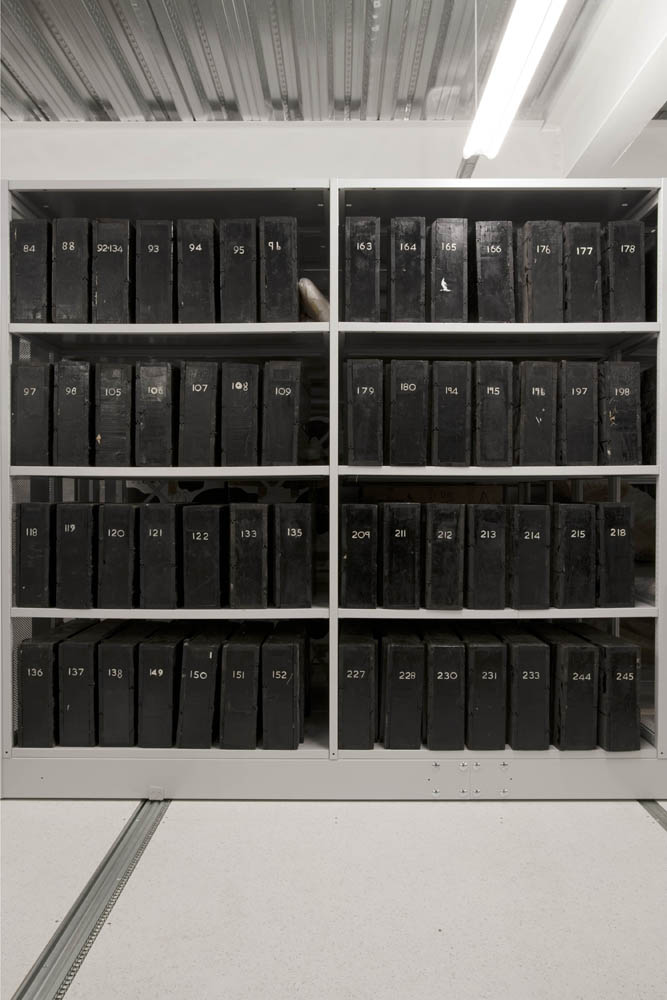BECAS
Paul Gaffney
Irlanda
El Orden de las Cosas

El propósito de un museo es coleccionar y cuidar los objetos que tienen una importancia científica, artística o histórica y los hace visibles por medio de exposiciones permanentes o temporales. Muchas de las piezas coleccionadas nunca van a llegar a las galerías o solamente estarán expuestas un periodo corto antes de volver a las despensas del museo. Muchas veces, los museos son criticados por el hecho de que solamente una fracción de sus colecciones están expuestas en un momento dado y se reciben quejas de 'alejar la cultura de la gente'.
La función del museo es más que solamente exponer objetos.
Estas piezas - a menudo de un valor incalculable – están siendo restauradas, tratadas, estudiadas y catalogadas. Al servicio de futuras generaciones.
Los comisarios, por sus decisiones en lo referente a lo que los museos coleccionan y muestran, determinan la percepción del público del arte y la historia. Desde los tiempos de Napoleón se han usado los museos para crear un sentido de identidad nacional. Además los contenidos de un museo pueden demostrar como el gusto nacional ha cambiado a lo largo de los años y su influencia mundial en relación al colonialismo y conquista.
Los museos sirven como un ejemplo de como nosotros, como humanos, intentamos clasificar y ordenar nuestro mundo - como esperamos ordenar exactamente nuestras ideas y opiniones.
Este proyecto fotográfico se centra en las despensas seguras del museo nacional de Cardiff y habla del orden y la estructura (ambos físico y organizativo) necesaria para manejar una colección tan grande y diversa.
Las fotos nos permiten ver como los objetos están guardados y, sin embargo, se nos niega verlos.
Lo que reafirma la distancia entre nosotros (como los espectadores sin privilegios/visitantes del museo) y estos objetos culturales. Así se crea un paralelo con las exposiciones habituales de los museos, donde nos permiten ver los objetos pero no podemos tocarlos.
Las fotos se expondrán en tres grandes tamaños (A1, A2 y A3) dependiendo de la distancia de la camera al sujeto.
The purpose of a museum is to collect and care for objects of scientific, artistic, or historical importance and make them available for public viewing through permanent and temporary exhibits. Many of the artefacts collected never make it to the galleries or are shown for just a short period of time before being returned to their slumber in the museum's store rooms. Museums are often criticised for the fact that only a small fraction of their massive collections are on display at any one time and receive complaints that they are 'keeping culture from the people'.
However, the function of the museum is more than just the display of objects. These artefacts - often priceless and deemed to be of great cultural value - are restored, treated, studied and catalogued. They are kept not only for our benefit but also for that of future generations.
Curators, through their decisions on what to collect and display, have the power to shape the public's perception of art and history and museums have since the time of Napoleon been used to create a sense of national identity. Indeed the contents of a museum can show how national taste has changed throughout the years and its world reach in terms of colonialism and conquest. Museums also serve as an example of how we, as humans, attempt to categorise and order our world – how we wish to neatly order our ideas and opinions.
This photographic project focuses on the various secure storage areas of the National Museum Cardiff and speaks about the order and structure (both physical and organisational) necessary to manage such a huge and varied collection.
The photos allow us to see how the objects are stored yet we are denied a view of the objects themselves, which reinforces the distance between us (as the non-privileged viewer/museum visitor) and these cultural objects and thus draws a parallel with the typical museum display where we are allowed to look but cannot touch.
The photos are intended to be displayed in three different sizes (A1, A2 & A3) depending on the distance from the camera to the subject.